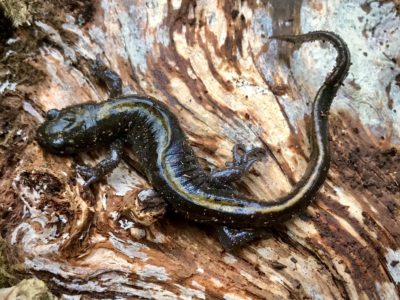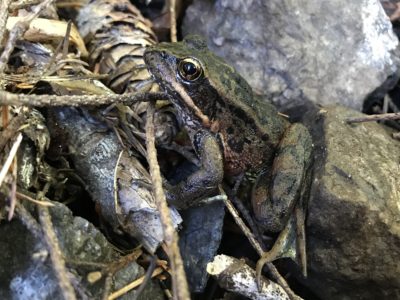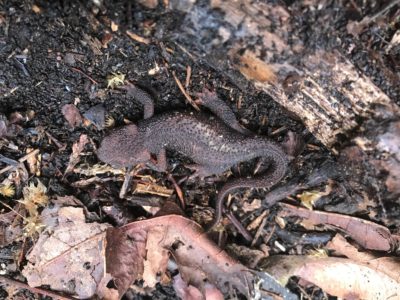With Spring comes another a joyful amphibian season in the islands. Just last week, SJPT Land Steward Rob Roy McGregor spotted a long-toed salamander (Ambystoma macrodactylis) on our new Jester Preserve (Orcas Island) during a monitoring visit. Rob Roy also found a northern red-legged frog (Rana aurora) there last September, along with several rough-skinned newts (Taricha granulosa). Long-toed salamanders and red-legged frogs are somewhat rare in the islands. Thanks to visionary preserve and conservation easement donors like Bob and Pat Jester, these and many other rarely (and not-so-rarely) observed species have forever-protected homes in the San Juans.

Long-toed Salamander | Staff archive

Northern red-legged frog | Staff archive

Rough-skinned newt | Staff archive
The presence of amphibians indicates a healthy ecosystem, and with its many conservation values, the Jester Preserve is just that. The preserve, located south of Rosario on the western slope of Entrance Mountain, has a nice wetland, about four acres in size, with a chain of seasonal pools connected by a seasonal stream. The mix of moving, still, and seasonal water with a variety of logs and wood debris on the ground make it an excellent place for a variety of amphibians and the invertebrates they feed on. The undisturbed waters support egg laying, where at times one can observe the bubble-like egg masses attached to underwater plants.
The soils of the wetland are very rich, thereby supporting a variety of nitrogen loving wetland plants—including slough sedge, salmonberry, and skunk cabbage. The skunk cabbage is in bloom right now (as of mid-March) and its skunky scent wafting through the woods is attracting all sorts of flies and early pollinators.
Thanks again to the Jesters for preserving this flourishing natural terrain!
